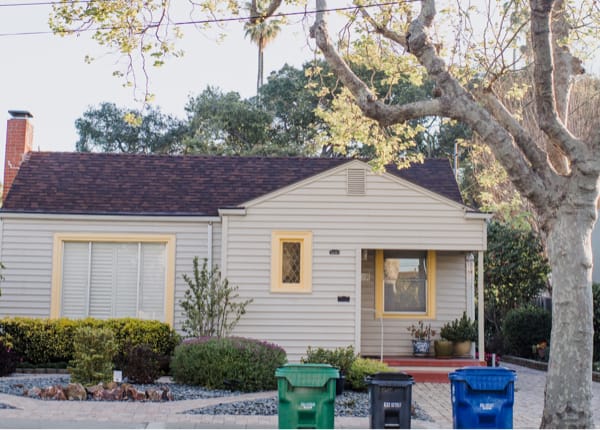Investment Loans > DSCR Loans > How TO Calculate DSCR
Finding The Right Property for a Debt Service Coverage Ratio Loan
Getting the right DSCR ratio – and therefore, the best chance of qualifying – means finding the best property. We’ll review the elements you need to consider when finding your next rental investment property.
What properties can be financed with a DSCR loan?
DSCR loans open doors for real estate investors by focusing on the property’s income potential rather than your traditional W-2 income. However, not all properties are created equal when it comes to DSCR loan eligibility. Here’s a breakdown of the property types typically financed with DSCR loans, along with some key considerations to keep in mind:
Residential Properties:
-
Single-family homes: The most common property type financed with DSCR loans. They offer a good balance of potential rental income, manageability, and appreciation potential.
-
Duplexes, Triplexes, and Fourplexes: These multi-unit properties can generate higher rental income due to having multiple tenants. However, they also require more management responsibility and may have stricter lending requirements from some DSCR lenders.
-
Small Apartment Buildings: Certain DSCR lenders specialize in financing small apartment buildings (typically 5-10 units). This can be a great option for experienced investors seeking significant cash flow, but be prepared for stricter qualification criteria and potentially higher down payment requirements.
Beyond Residential Real Estate:
- Commercial Properties: While less common, some DSCR lenders offer financing for commercial properties like office spaces or retail storefronts. These loans often come with stricter requirements, such as higher minimum DSCR ratios due to the inherent risk associated with commercial tenants. Additionally, managing commercial properties can be more complex compared to residential rentals.
Important Considerations:
-
Special Property Types: Fixer-uppers or properties requiring significant renovations might require a higher down payment from the lender. Be prepared to present a detailed renovation plan that outlines the scope of work, estimated costs, and how it will improve the property’s value and rental income.
-
Local Zoning Regulations: Before diving in, ensure the property type you’re interested in is zoned for rentals in the desired area. Violating zoning regulations can lead to fines and tenant occupancy issues.
-
Matching Your Investment Goals: Consider your long-term goals. Are you seeking steady cash flow or prioritizing potential for appreciation? Single-family homes and duplexes might be ideal for stable cash flow, while multi-unit buildings or fixer-uppers with potential for renovation could offer higher long-term appreciation.
By understanding these factors and aligning your property choice with your investment goals, you can leverage DSCR loans to unlock exciting opportunities in the real estate market. Remember, consulting with a DSCR loan specialist can provide valuable guidance on specific property types and lender requirements to ensure a smooth and successful investment journey.
How to evaluate a property’s location
When it comes to DSCR loans, location isn’t just about aesthetics; it’s the foundation for a successful investment. A well-located property attracts quality tenants, minimizes vacancy periods, and ultimately maximizes your rental income – the lifeblood of your DSCR ratio. Here’s a breakdown of key factors to consider when evaluating a property’s location:
Rental Demand:
-
Vacancy Rates: Low vacancy rates indicate high rental demand in the area. Research vacancy rates for the specific neighborhood you’re considering. Resources like rental market reports or local property management companies can provide valuable insights.
-
Rental Market Trends: Understanding rental market trends is crucial. Look for areas with a steady increase in rental demand, indicating a strong market for your investment over the long term.
-
Tenant Pool Analysis: Who are the typical renters in the area? Analyzing demographics like age, income levels, and occupations can help you determine if the property caters to their needs and preferences.
Location and Amenities:
-
Surrounding Amenities: Proximity to desirable amenities significantly impacts rental potential. Look for properties near schools, parks, public transportation options, shopping centers, or job hubs. These conveniences attract tenants and justify higher rental rates.
-
Accessibility Matters: Easy access to major roads and highways is a plus for tenants. Consider traffic patterns and commute times to gauge the overall accessibility of the location.
Future Development Plans:
-
The Power of Progress: Research any upcoming development plans in the area. New construction projects, revitalization efforts, or the opening of new businesses can significantly increase property values and rental rates in the surrounding neighborhood.
-
Infrastructure Improvements: Planned infrastructure improvements like new schools, parks, or public transportation options can also enhance the desirability of the location and boost your rental income potential.
Safety First – Prioritizing Security:
- Crime Rate Check: Safety is a top priority for tenants. Research crime rates in the neighborhood and prioritize locations with a good reputation for safety and security. A safe environment attracts responsible tenants and minimizes the risk of property damage or vandalism.
Remember: Location is an ongoing investment. A well-located property with strong rental demand not only generates steady cash flow but also positions you for potential appreciation in the long run. By thoroughly evaluating these factors, you can make informed decisions and find the perfect location to fuel your DSCR loan investment success.
How to evaluate a property’s condition
The condition of your investment property plays a critical role in the success of your DSCR loan strategy. While a fixer-upper might seem like a bargain, extensive repairs can drain your cash flow and negatively impact your DSCR ratio. Here’s what to consider when evaluating a property’s condition:
Minimize Maintenance Headaches:
Move-In Ready is Ideal: Prioritize properties that are move-in ready or require minimal repairs. Extensive renovations can significantly eat into your rental income and delay tenant occupancy, impacting your cash flow.
Anticipate Maintenance Costs: Factor in the potential for ongoing maintenance costs. Consider the age of major systems like the roof, HVAC, and plumbing. Look for properties with a history of regular maintenance to avoid unexpected repairs down the line.
Energy Efficiency:
Energy-Saving Features: Look for properties with energy-efficient features like newer appliances, LED lighting, energy-efficient windows, and proper insulation. These features not only attract environmentally conscious tenants but also help you save on utility costs, boosting your overall cash flow.
Smart Upgrades for Long-Term Savings: Consider potential upgrades that can improve energy efficiency, such as programmable thermostats or smart home features. While these might involve upfront costs, the long-term savings on utility bills can significantly benefit your investment.
Curb Appeal:
The Power of Presentation: A well-maintained exterior with good curb appeal makes a positive first impression on potential tenants. This can translate to higher rental rates and lower vacancy periods.
Minor Cosmetic Improvements: While major renovations might not be ideal, consider minor cosmetic improvements that can enhance the property’s visual appeal. Fresh paint, updated landscaping, or modern fixtures in the bathroom can significantly improve the property’s overall impression.
Hidden Value:
Strategic Improvements: Look for properties with the potential for minor upgrades that can significantly increase rental value. This might include modernizing kitchens and bathrooms, adding extra storage space, or finishing a basement (if permitted).
Future-Proofing Your Investment: Consider upgrades that cater to current tenant preferences, like smart home features or in-unit laundry. This can make your property more competitive in the rental market and potentially command higher rents.
Safety First:
Peace of Mind and Avoiding Issues: Ensure the property complies with all local building codes and safety regulations. This avoids potential fines from the city and minimizes the risk of tenant issues related to safety hazards.
Remember, a well-maintained property with minimal ongoing maintenance costs is crucial for a successful DSCR loan investment. By prioritizing properties in good condition and considering strategic upgrades, you can build a strong foundation for a profitable and sustainable investment.
How to evaluate a property’s rental potential
DSCR loans open doors for real estate investors by focusing on a property’s ability to generate income, rather than your traditional W-2 income. However, not all properties are created equal. To ensure your chosen property thrives under a DSCR loan, meticulous evaluation of its rental potential is crucial. Here’s a breakdown of key factors to consider:
1. Market Rents: Setting Realistic Expectations
Comparable Rents: Research similar rental properties in the area. Look for properties with comparable size, features, and location. Rental listing websites and local property management companies can be valuable resources for this step. Analyzing these comparable properties will give you a realistic idea of the potential rental income you can expect.
Decoding Rental Listings: Don’t just look at the price tag. Analyze rental listings for similar properties to understand current market rents, tenant preferences, and amenities that command higher rental rates. For example, are in-unit laundry or pet-friendly policies significant factors in your area? Understanding these details allows you to tailor your property to maximize its appeal and potentially justify a higher rent.
2. Seasonality: A Factor for Vacation Rentals
Considering the Cycle: If you’re considering a vacation rental property, factor in seasonal fluctuations in rental rates. Popular tourist destinations might experience peak seasons with significantly higher rents, balanced by lower off-season rates. Understanding these cycles is crucial to accurately project your overall annual rental income.
3. Unveiling Hidden Costs: Beyond the Rent
A Holistic View of Expenses: Don’t forget to factor in hidden costs associated with renting the property. These might include property management fees, which can range from 5% to 10% of the monthly rent. Vacancy periods, where the property sits unoccupied, also impact your cash flow. Budgeting for a vacancy rate of 5-10% is a good starting point. Additionally, consider maintenance requests and repairs that may arise during the tenancy.
4. The Power of Appreciation: Long-Term Potential
Building Equity Over Time: While rental income is your primary focus for a DSCR loan, consider the property’s potential for appreciation in the long run. Researching historical trends and future development plans in the area can give you insights into the property’s potential value growth. This appreciation adds to your overall return on investment, creating wealth beyond just the monthly rental income.
By thoroughly evaluating these factors, you can move forward with confidence, knowing you’ve chosen a property with strong rental potential – the cornerstone of a successful DSCR loan investment. Remember, a strong rental market, combined with a well-maintained property catering to tenant needs, positions you for a sustainable and profitable investment.
Where to research potential properties
Finding the right property is vital for a successful DSCR loan investment. While the property’s condition and rental potential are crucial, knowing where to research these factors is equally important. Here’s a roadmap to guide you through the top resources for uncovering potential DSCR loan investment properties:
Online Real Estate Platforms:
Zillow, Trulia, Realtor.com: These household names offer a convenient launchpad for your search. Their user-friendly interfaces allow you to search for properties based on location, price range, and property type. Additionally, many platforms provide features like rental listings with estimated income potential and neighborhood demographic data. This gives you a broad overview of potential properties and rental markets.
Real Estate Agent Expertise:
Local Market Knowledge is Power: Consider partnering with a real estate agent experienced in investment properties. Their local market knowledge is invaluable. They can identify hidden gems not yet listed publicly (off-market opportunities), analyze rental trends, and negotiate favorable terms on your behalf. A skilled real estate agent can be your strategic partner in navigating the complexities of the investment property market.
Property History Unveiled:
County Records: Most counties maintain online public records databases. These databases are a treasure trove of information about a property’s history. You can access past sales prices, ownership details, permits issued for renovations, and tax records. This information paints a picture of the property’s value trends and potential investment opportunities.
Subscription-Based Services: For a more comprehensive view, consider subscription-based services like PropertyShark or CoreLogic. These platforms offer detailed property reports with historical data, ownership information, liens on the property, and potential code violations. While they come with a fee, the in-depth insights they provide can be invaluable for making informed investment decisions.
Rental Market Research Tools:
Rentometer, Apartment List: These online tools are designed to empower real estate investors. They provide rental market data and analytics at a neighborhood level. You can find average rental rates, vacancy rates, and market trends for different property types. This allows you to assess the rental potential of a specific location and ensure your property aligns with current market demands.
Local Property Management Companies:
Connecting with the Experts: Local property management companies have their fingers on the pulse of the rental market. Reach out to them to gain valuable insights into rental demand, tenant demographics in the area, and typical lease rates. This firsthand knowledge can help you estimate your potential rental income and understand the competition in the neighborhood.
Additional Resources:
Local Landlord Associations: Joining your local landlord association connects you with a network of experienced investors and property managers. These associations can be a great source of information about local regulations, rental trends in your area, and best practices for finding qualified tenants.
Real Estate Investment Forums: The internet offers a wealth of knowledge through online forums dedicated to real estate investing. These forums allow you to connect with other investors, ask questions about specific markets or property types, and learn from the experiences of others.
Remember: Don’t rely on a single source of information. Utilize a combination of these resources to thoroughly research potential properties. By leveraging online tools, professional expertise, and local market data, you can make informed decisions and unearth the perfect property to propel your DSCR loan investment journey.
We’ve qualified hundreds of borrowers for DSCR Loans
Reach out below to talk to our team of experts about leveraging rental income to qualify for a rental property.
How To Get a DSCR Loan
Learn how DSCR loans work, who can qualify, and how you should plan your DSCR strategy.
How To Calculate The Loan Amount for a DSCR Loan
Learn how you can calculate the loan amount and DSCR ratio of your ideal property and understand your chances of getting approved for that loan.
How To Qualify for a DSCR Loan
Get a full view of all the elements lenders will review when qualifying you and your property for a DSCR mortgage.

Let’s Review Your Docs and Make A Plan
Let our team of experts walk through your investment property options to see what you can qualify for.
Learn More About Mortgages
No Doc Mortgage Loans for Self-Employed Borrowers
Bank statement home loans offer relaxed guidelines versus traditional mortgage loans. If you need to acquire funds in a hurry, you might qualify for an asset-based home loan. Abo Capital helps qualified self-employed borrowers obtain no doc mortgage loans. What...
Discover Non-Qualified Mortgage Loans
Mortgage lenders provide funding for an array of projects. Fortunately, you’re a real estate developer, an investor or a local business owner, and you have the resources to repay a mortgage loan. However, you may not have financial documentation to get approved for a...
Private Money Lenders in Los Angeles, California
Private money lenders offer financing that’s typically unavailable through traditional banks and mortgage companies. Whether you need a bridge loan or to borrow money from an income producing property, a private money lender is a great resource. You can find...






